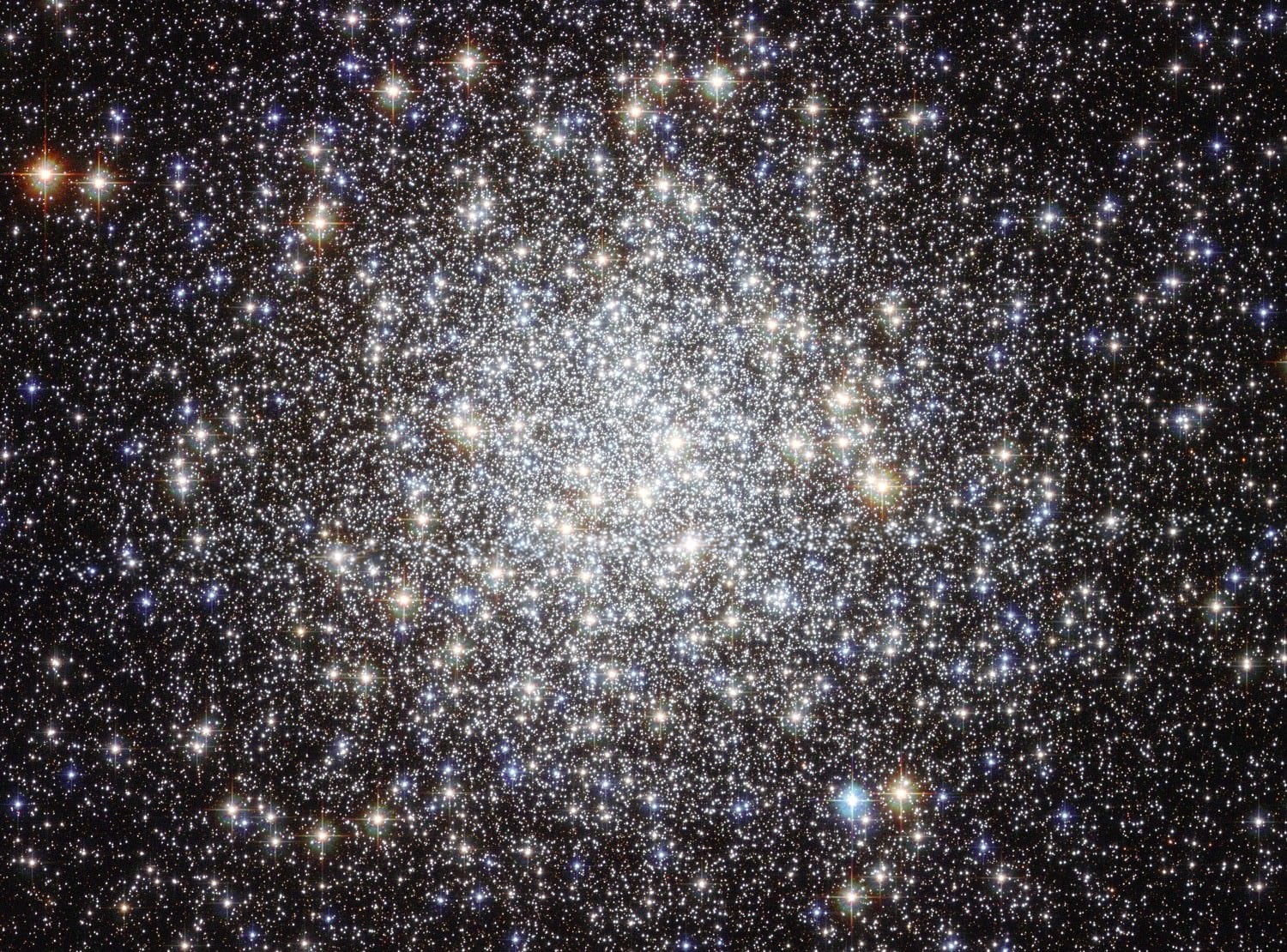Due to Easter Weekend, we are celebrating Messier Monday a day later than usual this week. But as always, this latest installment is in honor of our dear friend and contributor Tammy Plotner.
In the 18th century, French astronomer Charles Messier kept noting the presence of fixed, diffuse objects in the night sky. At the time, he mistook them for comets, but eventually realized his mistake and began compiling them into a list. Known as the
Messier Catalog
, this list was created to ensure that other astronomers did not make the mistake.
But more than that, it would go on to serve as a milestone in the history of astronomy and the study of Deep Sky Objects. One of these objects is Messier 9 (aka. M9 or NGC 6333), a globular cluster that is positioned in the southern part of the constellation of
Ophiuchus
. It is one of the nearer globular clusters to the center of the Milky Way Galaxy, with a computed distance of 5,500 light-years from the Galactic Center.
Description:
Messier 9 is one of the closest globular clusters to our Milky Way galactic nucleus. At about 25,800 light years from our Solar system, it keeps its stars collected in a loose sphere that encompasses approximately 90 light years of space. Speeding away from us at a speed of 224 kilometers per second, M9 is also passing through an interstellar dust cloud that is dimming some of the light we see. Even though the light is blocked, the combined light of this ball of distant suns shines 120,000 times brighter than Sol!
If you look closely, you'll notice Messier 9 is also a little flattened, too. That's caused by the gravity of our own galactic core pulling on it. Deep inside there are 13 variable stars there, too! According to its color diagram, M9 is a very metal poor star cluster, but has well-defined giant branches and blue horizontal branches. It is entirely possible that its red giant population is well fed because it passes through enriched proto-globular clusters' clouds.
[caption id="attachment_128145" align="aligncenter" width="580"]
The constellation Ophiuchis, with M9 visible towards the southern end. Credit: iau.org
[/caption]
History of Observation:
M9 is one of the original discoveries of Charles Messier, which he observed on June 3rd, 1764. As he recorded the discovery:
It would be a few years before M9's true nature became apparent when Sir William Herschel first resolved it:
[caption id="attachment_31248" align="aligncenter" width="580"]
The Messier 9 globular cluster, located 5500 light years from the Galactic Center. Credit: NASA
[/caption]
However, it was Admiral Smyth who describes it as we see it today in most backyard telescopes:
Locating Messier 9:
Unfortunately, there is no easy way to locate M9. The constellation of Ophiuchus is sprawling and it will take some practice to identify Eta. Once you do, you'll find this small globular cluster about 3 degrees (two finger widths) to the southeast. Look for a small triangular formation of stars and aim slightly above the southernmost.
While M9 is achievable in binoculars, keep in mind that low magnifying powers and aperture, such as 6X30 models, will mean the image you will see is tiny and you'll have to keep your binoculars steady to pick it out of the field. Larger models will improve the situation, but you'll need dark skies to capture this Messier without more power. In a small telescope, M9 will still have difficulty resolving - but will show hints of a concentrated core region. As you approach the 6" and larger range, resolution begins and large aperture scopes can fully resolve this loosely constructed globular cluster fully.
And here are the quick facts on this globular cluster:
- Object Name
-
Messier 9
- Alternative Designations
-
M9, NGC 6333
- Object Type
-
Class VIII Globular Cluster
- Constellation
-
Ophiuchus
- Right Ascension
-
17 : 19.2 (h:m)
- Declination
-
-18 : 31 (deg:m)
- Distance
-
25.8 (kly)
- Visual Brightness
-
7.7 (mag)
- Apparent Dimension
-
12.0 (arc min)
Enjoy your viewing!
We have written many interesting articles about Messier Objects here at Universe Today. Here's Tammy Plotner's
Introduction to the Messier Objects
, ,
M1 – The Crab Nebula
, and David Dickison's articles on the
2013
and
2014
Messier Marathons.
Be to sure to check out our complete
Messier Catalog
. And for more information, check out the
SEDS Messier Database
.
 Universe Today
Universe Today


